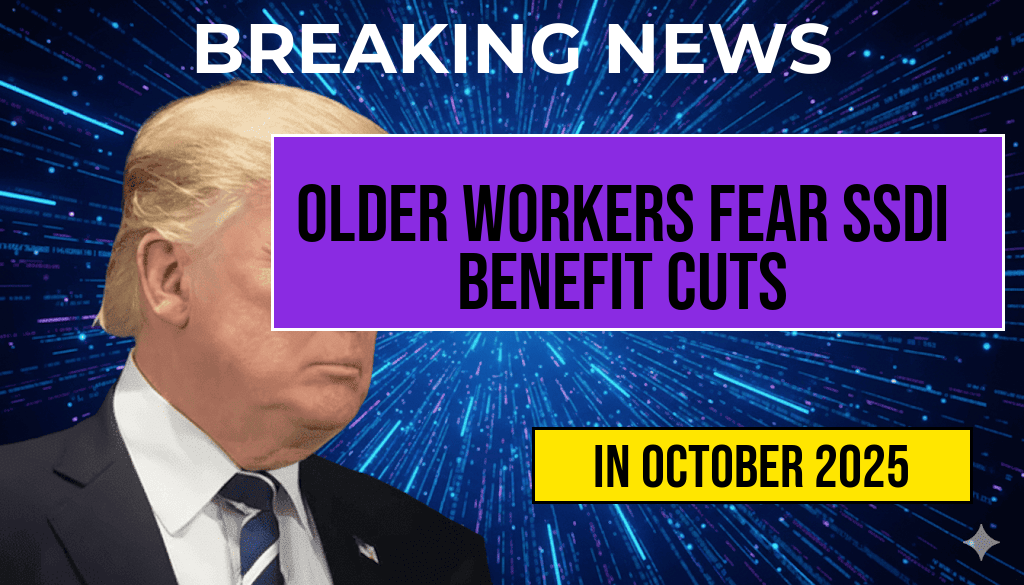As legislative debates intensify, older workers across the United States are expressing deep concern over proposed changes to the Social Security Disability Insurance (SSDI) program, which could jeopardize approximately $82 billion in benefits. The SSDI program, a crucial lifeline for millions of Americans facing disabilities, is under scrutiny as lawmakers explore potential reforms aimed at addressing funding shortfalls. Advocates for older workers fear that any overhaul may disproportionately affect those most reliant on these benefits, leading to financial instability and insecurity. With the number of beneficiaries increasing, the urgency for constructive dialogue on the future of SSDI has never been greater.
The Stakes of SSDI Reform
The SSDI program provides essential support to individuals who can no longer work due to disabilities. In 2022 alone, nearly 9 million Americans received SSDI benefits, highlighting the program’s significance in preventing poverty among disabled workers. However, the program is facing a funding crisis, with projections indicating that the trust fund could be depleted by 2035 if current trends continue. This looming shortfall has prompted policymakers to consider various reform strategies, some of which have raised alarms among older workers and advocates.
Proposed Changes and Their Implications
Recent proposals include adjustments to eligibility criteria and work requirements, designed to extend the program’s solvency. Critics argue that such changes could result in increased barriers for those needing assistance. Key components of the proposed reforms include:
- Increased Work Requirements: Some lawmakers suggest that SSDI beneficiaries should demonstrate a greater capacity to work before receiving benefits, potentially disqualifying those unable to meet these new standards.
- Eligibility Revisions: Changes to the definition of disability could make it more challenging for older workers to qualify for benefits, particularly those with long-term health conditions.
- Funding Adjustments: Proposals to reduce benefits or limit cost-of-living adjustments could further exacerbate financial strains on vulnerable populations.
Concerns Among Older Workers
Older workers are particularly vulnerable to the effects of SSDI reforms, as they often face age-related disabilities and health issues that can hinder their ability to find work. Many have voiced their fears that the changes could lead to a significant reduction in their income, pushing them into poverty. Joan Miller, a 62-year-old SSDI recipient from Ohio, expressed her concerns: “I’ve worked hard all my life, and this benefit is what keeps me afloat. If they change the rules, I don’t know how I’ll survive.”
Advocacy and Community Response
Advocacy groups are mobilizing to protect SSDI beneficiaries, emphasizing that any reforms must prioritize the needs of disabled individuals, especially older workers. Organizations such as the National Organization of Social Security Claimants’ Representatives (NOSSCR) and the AARP are actively campaigning against proposed changes they view as harmful. They argue that the focus should instead be on ensuring adequate funding for the program through alternative measures, such as increasing payroll taxes or revising the income cap on contributions.
Legislative Outlook
The future of SSDI reform remains uncertain, as lawmakers are divided on the best approach to address the program’s financial challenges. Some prioritize immediate cuts and stringent eligibility criteria, while others advocate for more comprehensive reforms that would safeguard benefits for vulnerable populations. The coming months will be critical, as legislators engage in discussions that could shape the future of SSDI and the well-being of millions of Americans.
Conclusion: A Call for Dialogue
As discussions around SSDI reform continue, it is imperative for all stakeholders to engage in constructive dialogue. Older workers, advocates, and policymakers must collaborate to create solutions that ensure the program’s sustainability without compromising the livelihoods of those it serves. With the potential for significant changes on the horizon, the voices of older workers must be heard as they navigate this uncertain future.
| Age Group | Number of Beneficiaries |
|---|---|
| 18-24 | 500,000 |
| 25-54 | 4,500,000 |
| 55+ | 4,000,000 |
For more information on SSDI and its current status, visit Social Security Administration. To understand the broader implications of proposed reforms, check out this article from Forbes.
Frequently Asked Questions
What is the SSDI overhaul mentioned in the article?
The SSDI overhaul refers to proposed changes to the Social Security Disability Insurance program that could significantly impact benefits for older workers.
How much in benefits is threatened by the SSDI changes?
The proposed changes threaten approximately $82 billion in benefits that support many individuals with disabilities, particularly affecting older workers.
Who will be most affected by the SSDI overhaul?
Older workers who rely on SSDI benefits are likely to be the most affected, as the changes could alter eligibility and reduce the financial assistance they receive.
What are the main concerns of older workers regarding these changes?
Older workers are alarmed that the overhaul may lead to reduced benefits and stricter eligibility criteria, which could jeopardize their financial stability during retirement.
What can older workers do to advocate against the SSDI changes?
Older workers can stay informed about the SSDI overhaul proposals, contact their representatives, and join advocacy groups that aim to protect disability benefits.











